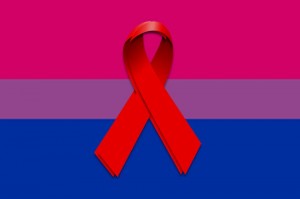 I read something about it in 1981. A newspaper report about a mysterious rare cancer found in 41 gay men.
I read something about it in 1981. A newspaper report about a mysterious rare cancer found in 41 gay men.
I’d returned to DC in August 1980 from the International Black Hills Survival Gathering outside Rapid City, SD, where we—the environmental activists, American Indian Movement leaders, ranchers, and concerned scientists, academics and clergy—were trying to stop the rape of uranium mining of the sacred Black Hills. I’d been listening to all the tribal prophecies about the coming shift and hard times. It was the beginning of the Reagan reign. Republicans were invading and occupying DC.
We were fighting a tenant ownership battle in Adams-Morgan (during a prior gentrification wave) and losing our low-income, cooperatively-structured apartment homes. Yes, our building was multi-lingual, multi-cultural, and low-income. And yes, we’d made the neighborhood too groovy. It was a strange privileged place to be. Even though I’d seen my friend’s family pushed out as the rents rose and watched as all their belongings were thrown out onto the curb on 18th Street, I didn’t understand race and class privilege as deeply then as I do now.
I had to get out of DC. The grief and conflict bursting out of it was killing me. It took another two years of paying the bills; working on multi-media educational film packets about women and work; covering the Seneca Women’s Peace Camp effort in upstate New York; hugging the edge of the army depot where cruise missiles crouched, ready for shipping overseas. Insane! I had to get out of DC.
In the summer of 1983, Lisa Yost and I (she later became a contributor in Bi Any Other Name) drove north to the very end of Cape Cod to live with other women writers and artists, at Freehand Women’s Writers School, which was run by lesbian poets Rita Speicher and Olga Broumas. One of the biggest TERF (Trans-Exclusionary Radical Feminist) leaders today, also an eco-feminist, was in our class then, but that’s a whole other story.
In 1984, I worked as a typesetter at the P’town weekly newspaper, The Advocate, and it was obvious that our obituary pages were full of the names of the town drag queens. But, I still didn’t understand what was happening.
I took refuge in Provincetown, Massachusetts, in women’s community, in women’s spaces, in women’s arms. It was a soft landing by the sea, and mother ocean soothed me. I finally began to peel away my armor, lose weight, work out, and write all day long. I was having the time of my life, but it was only a looking glass world. I couldn’t handle it in the summer when the tourists invaded.
So I went back to where I was born, to Washington DC. By the time I returned to the city, to civilization, to crazy over-heated frenzied DC, it was 1985, and I’d just met Lani Ka’ahumanu. A phenomenal woman in my life who became my collaborator, confident and co-editor of Bi Any Other Name. When we began working on our book, many of our leading male bisexual activists were dying of AIDS. In the mid-1980s, Newsweek magazine was characterizing bi men (not gay men) as “the ultimate pariahs” of the AIDS epidemic. Other news outlets labeled bi men “Typhoid Mary,” scapegoating bisexual men for the growing public health crisis. The heartbreaking devastation of this disease had become personal.
The bi movement politicized me in so many ways. Even while I wavered back and forth between the fierce women artists of the Cape and the mad politicians and dirty deals in the Capital, I started connecting with other bisexuals, out in California, up and down the east coast, eventually in the Midwest and the South. I first tried to write about bisexuality in the off our backs women’s newspaper, which was published by a bunch of radical feminists in the best possible sense, except they were a little wacky and sometimes scary too.
I’d acquired a wonderful foundation in civil rights organizing as a child, and a grounding in feminist process and task accomplishments that stretched across the peace, anti-war, environmental, gay, tenants rights, and third world solidarity movements. But it was the bi movement that brought it all together for me. Totally made me feel at home. Except I haven’t completely relaxed, even in the here and now. Still, our bisexual community is a precious gift.
So for all those who we’ve lost to AIDS, those who are still dying much too young and those who are over-pharmaceuticalized and preserved alive for now, I raise my voice. In this crazy city of my birth, my bones aching with the struggle and my blood aflame with rage against injustice, I remember.
Tags: Bi Any Other Name, bisexual activists, Lani Ka’ahumanu, TERF, Trans-Exclusionary Radical Feminist, World AIDS Day



Thank You, Loraine, for sharing and taking us back to the beginning of what was initially referred to GRID (Gay Relate Immune Deficiency) and the H Groups were stigmatized — Homosexuals; Hatians; Heroin Drug Users; and Hemophiliacs. Eventually, Sex Workers were added to the group. The 5th H (heterosexuals) was eventually acknowledged to be at-risk for HIV infection which began the finger pointing/blaming of bisexuals, closeted gay men, men on the DL (down low), and MSM (men who have sex with men).